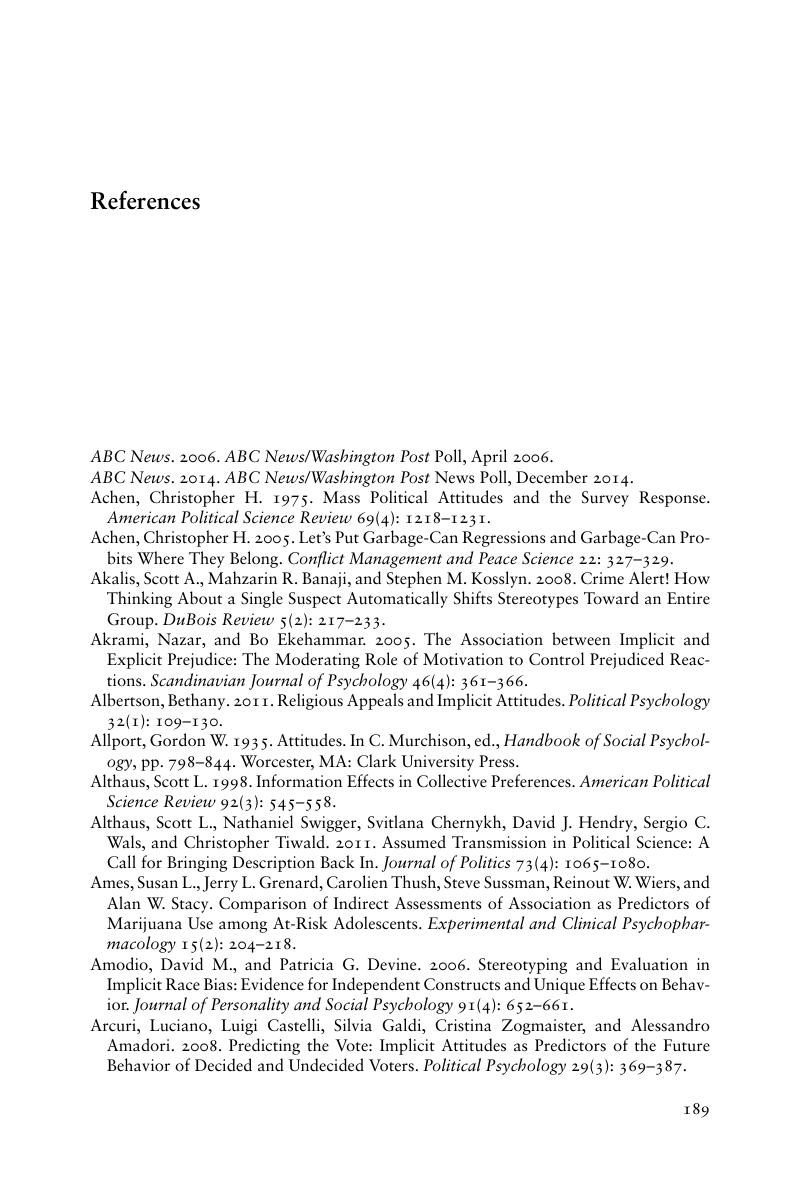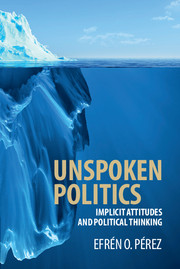Book contents
- Frontmatter
- Contents
- List of Tables and Figures
- Acknowledgments
- 1 Implicit Thoughts, Explicit Decisions
- 2 Two Ways of Thinking, Two Types of Attitudes
- 3 Implicit Expectations and Explicit Political Reasoning
- 4 Ghost in the Associative Machine
- 5 Unstated: The Measurement of Implicit Attitudes
- 6 Incognito: The Subconscious Nature of Implicit Expectations
- 7 In Deliberation's Shadow: Education, (Un)awareness, and Implicit Attitudes
- 8 In Black and White: Race, Group Position, and Implicit Attitudes in Politics
- 9 Conclusion: Implicit Attitudes and Explicit Politics
- Note on the Studies
- References
- Index
- Books in the series
- References
References
Published online by Cambridge University Press: 05 March 2016
- Frontmatter
- Contents
- List of Tables and Figures
- Acknowledgments
- 1 Implicit Thoughts, Explicit Decisions
- 2 Two Ways of Thinking, Two Types of Attitudes
- 3 Implicit Expectations and Explicit Political Reasoning
- 4 Ghost in the Associative Machine
- 5 Unstated: The Measurement of Implicit Attitudes
- 6 Incognito: The Subconscious Nature of Implicit Expectations
- 7 In Deliberation's Shadow: Education, (Un)awareness, and Implicit Attitudes
- 8 In Black and White: Race, Group Position, and Implicit Attitudes in Politics
- 9 Conclusion: Implicit Attitudes and Explicit Politics
- Note on the Studies
- References
- Index
- Books in the series
- References
Summary

- Type
- Chapter
- Information
- Unspoken PoliticsImplicit Attitudes and Political Thinking, pp. 189 - 210Publisher: Cambridge University PressPrint publication year: 2016



